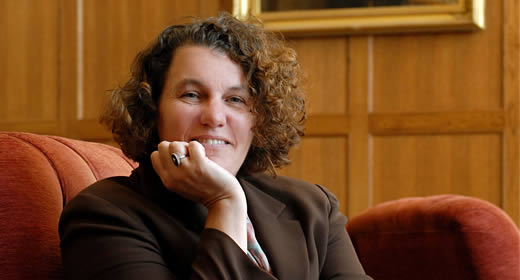
Testifying Wednesday morning before the U.S. Senate Committee on Finance, Susan M. Dynarski advocated for a simplification of the financial aid process that would allow families to better understand exactly how much the federal government can help pay to send their child to college.
"We have very strong evidence that if you were able to streamline and simplify the process for applying for aid, we would get a large boost to college attendance right away," said Dynarski, citing a study by the National Bureau of Economic Research, where she is a faculty research associate.
The hearing, "Education Tax Incentives and Tax Reform," focused on how to reconcile two different funding mechanisms available to families to help meet the rising costs of a college education – financial aid programs provided through the U.S. Department of Education, such as Pell Grants and Stafford Loans, and college savings programs implemented through the Internal Revenue Service.
In her prepared testimony (Adobe PDF), Dynarski recommended reducing paperwork for families by allowing them to establish eligibility for aid programs and tax incentives in a single application; currently ED and IRS require separate submissions. Combining the applications also would give families an early estimate of how much they could expect to receive from incentives such as the American Opportunity Tax Credit, which provides for undergraduate education.
"The tax credits can affect college attendance only if students know about them before they go to college," Dynarski said in her prepared remarks.
Also, since incentives are only refunded after tax returns are processed – months after college enrollment has begun and tuition payments are due – Dynarski advised that the AOTC be routed like other forms of financial aid, directly to the institution before the semester begins. She suggested using past income data to provide an estimate of the tax credit and permit up-front distribution.
"If people need the money to go to school, they need it when they need to pay the tuition bill; they don't need it 18 months later," Dynarski said. "If we could achieve those goals with the tax provisions, then as far as the families are concerned, they're going to be a grant."
When Committee chairman Max Baucus (D-MT) noted the complexity of reshaping the tax credit to function like a grant, Dynarski emphasized the importance of helping families understand how much financial aid they can expect.
"It can be complicated on the back end but simple on the front end for the student who is applying," she said. "If we want to have aid coming from a lot of different funding streams, that's fine, but as long as the student who is applying sees a transparent and simple answer to "How much does college cost?" and "How much will the government help me?" then that can have a real impact."
Dynarski added that college savings programs such as the 529 Plan – named after its section number in the Internal Revenue Code – predominantly benefit the families who can afford to save, i.e. upper-income families, and likely do not improve a child's chances of pursuing higher education.
"I would say we don't have any evidence at all that the savings incentives increase college attendance," Dynarski said.
[Read testimony (Adobe PDF)]
[See media coverage of Dynarski's testimony]
[Watch video of Dynarski's full testimony]